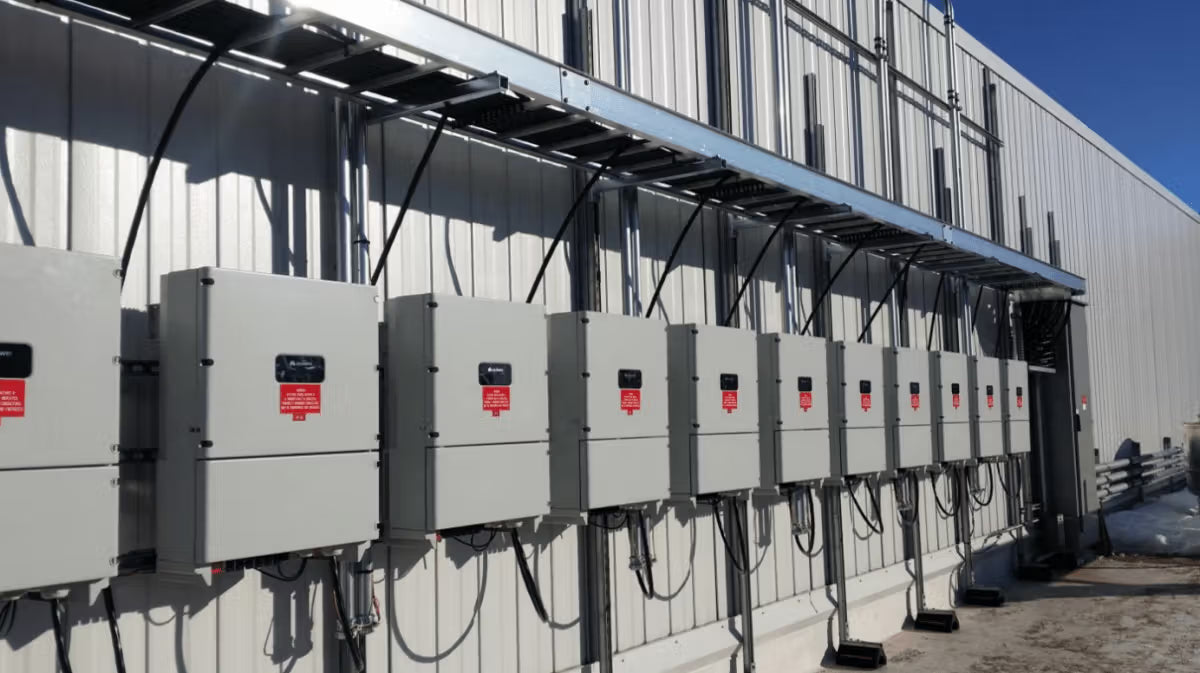
What are the types of solar inverters? Here’s Why It Matters
Solar inverters are the unsung heroes of any solar system. They convert sunlight into usable power, ensuring your home or business runs smoothly.
However, not all inverters are built in the same way. Knowing the different types helps you pick the right fit for your energy needs and budget.
What Are the Types of Solar Inverters?
The main types of solar inverters are string inverters, microinverters, power optimisers, hybrid inverters, and off-grid inverters.
Key Takeaway
- String inverters: Affordable, best for wide-open roofs without shade.
- Microinverters: Panel-level efficiency, great for shaded roofs.
- Power optimisers: Balance of cost and performance under partial shade.
- Hybrid inverters: Work with batteries for storage and backup power.
- Off-grid inverters: Perfect for remote homes, run fully independent from the grid.
What Is a Solar Inverter?

Think of a solar inverter as the translator between your panels and your house. Solar panels create DC power, but your gadgets, lights, and AC only understand AC.
The inverter flips that energy into the right format so you can actually use it. Without it, your panels are basically just sun collectors with no drip.
It’s the brain of the system, making sure the power runs smoothly, safely, and steadily.
Why Choosing the Right Solar Inverter Matters
Pick the wrong inverter and your solar setup won’t hit its full potential. It’s like pairing a luxury watch with plastic straps, all style but no real flex.
The right inverter keeps your system efficient, stable, and easy to manage. That means fewer headaches, lower bills, and better long-term performance.
Think of it as the cheat code for making your panels work smarter, not harder.
Main Types of Solar Inverters
String Inverters
Think of string inverters as the OG setup. All your solar panels are “strung” together, sending power to a single inverter that converts it into usable energy.
It’s simple and cost-friendly, but there’s a catch. If one panel slacks off—say it’s shaded by a tree—your whole string underperforms. Great for wide-open roofs, not so great if you’ve got patchy shade.
Microinverters
Microinverters flip the script. Instead of one big box, each panel gets its own tiny inverter. That means each panel pulls its own weight, so shade on one panel doesn’t drag the whole system down.
They’re pricier up front, but the efficiency boost pays off. You also get panel-level monitoring, so you can see which one’s pulling MVP numbers.
Power Optimisers
Power optimisers are like the middle child—combining perks from both worlds. Each panel gets an optimiser that conditions the power before sending it to a central inverter.
You get better performance under partial shade without going full microinverter mode. It’s a solid compromise if you want a balance between efficiency and budget.
Hybrid Inverters
Hybrid inverters are the multitaskers. They don’t just handle solar; they also integrate with batteries for energy storage.
So, when the grid’s down or electricity prices spike, your stored power keeps the lights on. If you’re thinking long-term with batteries, this is the smart play.
Off-Grid Inverters
Off-grid inverters live where the grid doesn’t. They convert solar energy into power while managing battery storage, so your home or cabin runs fully independent.
It’s freedom with a twist; you need a well-designed system since there’s no backup from the grid. Perfect for remote spots or anyone chasing total independence.
Which One’s Right for You?
If you’ve got a big, unshaded roof, string inverters keep things simple. Shady spots? Microinverters or optimisers will flex harder. Planning to add storage? Go hybrid. Off the beaten path? Off-grid inverters have your back.
Bottom line: match the tech to your lifestyle. The right inverter is less about chasing specs and more about making solar work for how you live.
Comparing Solar Inverter Types
Choosing the right inverter is all about matching it to your lifestyle. String inverters are like the “one size fits all” option, solid and affordable if you’ve got a simple setup.
Microinverters let each panel do its own thing, so shade on one won’t kill your whole system. Hybrids mix grid and battery use, giving you more control and backup power.
Think of it like picking between sneakers, boots, or dress shoes. Each works, but the best fit depends on how you’ll actually use them.
How to Choose the Best Inverter for Your Home

Think about your power needs first. If you’re running heavy appliances daily, you’ll need more muscle.
Next, weigh efficiency against budget. A pricier model might save you money long term.
Also, check compatibility with your solar panels and future upgrades. You don’t want a setup that boxes you in later.
Bottom line, pick the inverter that fits your lifestyle, not just the spec sheet.
Frequently Asked Questions
1. Do all solar inverters need maintenance?
Yep, but nothing crazy. Just keep them clean, cool, and dust-free so they don’t overheat.
2. How long do solar inverters last?
Most push through 10–15 years. Treat them right and you’ll stretch that.
3. Which inverter type is best for homes?
String inverters work for simple setups, but microinverters shine if you’ve got shade or mixed panel angles.
Conclusion
Picking the right solar inverter isn’t rocket science, but it’s not a throwaway choice either. Each type has its own perks depending on your setup, budget, and goals.
Think of it as matching your sneakers to the occasion, make the right call, and your solar system runs smoother for longer.

Leave a comment